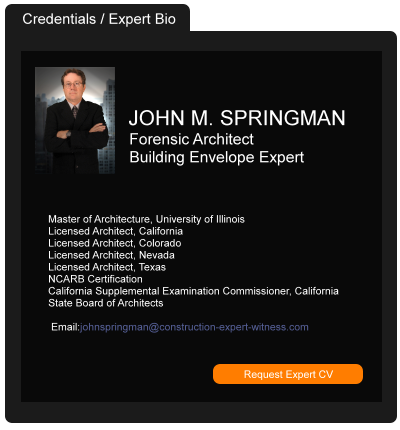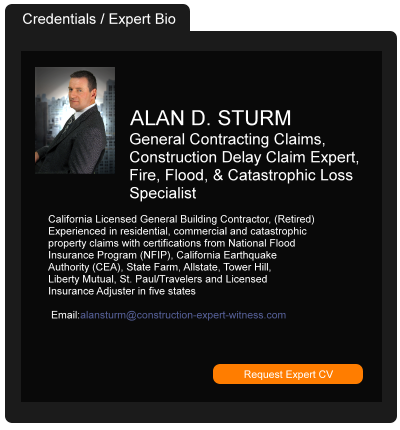Toolbox Talk Series Recap – Best Practices for Productive Rule 26(f) Conferences on Discovery Plans
May 13, 2024 —
Douglas J. Mackin - The Dispute ResolverIn the April 4, 2024 edition of Division 1’s Toolbox Talk Series,
Julian Ackert and
Steve Swart presented on how to prepare for and structure Rule 26(f) conferences to be more effective. While Swart and Ackert focused on the requirements of Federal Rule of Civil Procedure 26(f) regarding the requisite conference of the parties prior to a scheduling conference or scheduling order, it is worth noting that many states have substantially similar requirements.
Rule 26(f) requires the parties to (i) discuss the nature and basis of their claims or defense; (ii) make or arrange for mandatory disclosures pursuant to Rule 26(a)(1); (iii) discuss issues about preserving discoverable information (including Electronically Stored Information – “ESI”); and (iv) develop a proposed discovery plan. Swart and Ackert’s presentation focused on the preservation of ESI and the proposed discovery plan.
Read the court decisionRead the full story...Reprinted courtesy of
Douglas J. Mackin, Cozen O’ConnorMr. Mackin may be contacted at
dmackin@cozen.com
eRent: Construction Efficiency Using Principles of the Sharing Economy
November 06, 2018 —
Aarni Heiskanen - AEC BusinesseRent has developed a digital equipment management portal for construction equipment. At the very heart of the concept lies the resource efficiency that can be achieved using principles of the sharing economy.
Olli Aaltonen, CEO of eRent Solutions, is confident about the platform his company has created: “Besides offering a digital solution to a rather inefficient workflow in the construction business, we are also introducing a way to track and manage your construction equipment, whether it is owned, rented, or leased. The cost savings are obvious we believe our tracking feature brings our customers even more value.”
Read the court decisionRead the full story...Reprinted courtesy of
Aarni Heiskanen, AEC BusinessMr. Heiskanen may be contacted at
aec-business@aepartners.fi
It’s All a Matter of [Statutory] Construction: Supreme Court Narrowly Interprets the Good Faith Dispute Exception to Prompt Payment Requirements in United Riggers & Erectors, Inc. v. Coast Iron & Steel Co.
May 30, 2018 —
Erinn Contreras & Joy O. Siu - Sheppard Mullin Construction & Infrastructure Law BlogOn May 14, 2018, the California Supreme Court issued its opinion in United Riggers & Erectors, Inc. v. Coast Iron & Steel Co., No. S231549, slip. op. (Cal. Sup. Ct. May 14, 2018). In it, the Court narrowly construed the “good faith” exception to the general rule that a direct contractor must make retention payments to its subcontractors within 10 days of receiving any retention payment. The exception provides that “[i]f a good faith dispute exists between the direct contractor and a subcontractor, the direct contractor may withhold from the retention to the subcontractor an amount not in excess of 150 percent of the estimated value of the disputed amount.” Cal. Civ. Code section 8814(c).
Reprinted courtesy of
Erinn Contreras, Sheppard Mullin and
Joy O. Siu, Sheppard Mullin
Ms. Contreras may be contacted at econtreras@sheppardmullin.com
Ms. Siu may be contacted at jsiu@sheppardmullin.com
Read the court decisionRead the full story...Reprinted courtesy of
Insurers Subrogating in Arkansas Must Expend Energy to Prove That Their Insureds Have Been Made Whole
July 30, 2019 —
Michael J. Ciamaichelo - The Subrogation StrategistArkansas employs the “made whole” doctrine, which requires an insured to be fully compensated for damages (i.e., to be “made whole”) before the insurer is entitled to recover in subrogation.[1] As the Riley court established, an insurer cannot unilaterally determine that its insured has been made whole (in order to establish a right of subrogation). Rather, in Arkansas, an insurer must establish that the insured has been made whole in one of two ways. First, the insurer and insured can reach an agreement that the insured has been made whole. Second, if the insurer and insured disagree on the issue, the insurer can ask a court to make a legal determination that the insured has been made whole.[2] If an insured has been made whole, the insurer is the real party in interest and must file the subrogation action in its own name.[3] However, when both the insured and an insurer have claims against the same tortfeasor (i.e., when there are both uninsured damages and subrogation damages), the insured is the real party in interest.[4]
In EMC Ins. Cos. v. Entergy Ark., Inc., 2019 U.S. App. LEXIS 14251 (8th Cir. May 14, 2019), EMC Insurance Companies (EMC) filed a subrogation action in the District Court for the Western District of Arkansas alleging that its insureds’ home was damaged by a fire caused by an electric company’s equipment. EMC never obtained an agreement from the insureds or a judicial determination that its insureds had been made whole. In addition, EMC did not allege in the complaint that its insureds had been made whole and did not present any evidence or testimony at trial that its insureds had been made whole. After EMC presented its case-in-chief, the District Court ruled that EMC lacked standing to pursue its subrogation claim because “EMC failed to obtain a legal determination that its insureds had been made whole . . . prior to initiating this subrogation action.” Thus, the District Court granted Entergy Ark., Inc.’s motion for judgment as a matter of law and EMC appealed the decision.
Read the court decisionRead the full story...Reprinted courtesy of
Michael J. Ciamaichelo, White and Williams LLPMr. Ciamaichelo may be contacted at
ciamaichelom@whiteandwilliams.com
No Coverage for Installation of Defective Steel Framing
June 26, 2014 —
Tred R. Eyerly – Insurance Law HawaiiThe California Court of Appeal affirmed the trial court's holding that the insurer had no duty to defend claims arising out of the insureds' installation of defective steel framing in an apartment building. Regional Steel Corp. v. Liberty Surplus Ins. Corp., No. B245961(Cal. Ct. App. May 16, 2014) [decision here].
Regional Steel was a subcontractor for providing reinforced steel to the columns, walls, and floors of an apartment building under construction. Regional used 90 degree and 135 degree seismic hooks as approved by the general contractor, JSM Construction, Inc. The City building inspector issued a correction notice, however, requiring the exclusive use of the 135 degree hooks. Levels one through three had defective tie hooks and required repair. JSM refused to pay Regional's invoices and withheld $545,000. JSM had to make repairs that required opening up numerous locations in the concrete walls, welding reinforcements to the steel placed by Regional, and otherwise strengthening the inadequate installation.
Regional sued JSM for the withheld payment. JSM cross-claimed, asserting breach of contract and breach of express and implied warranties.
Read the court decisionRead the full story...Reprinted courtesy of
Tred R. Eyerly, Insurance Law HawaiiMr. Eyerly may be contacted at
te@hawaiilawyer.com
Hawaii Bill Preserves Insurance Coverage in Lava Zones
May 20, 2015 —
Tred R. Eyerly – Insurance Law HawaiiThe Hawaii legislature passed a bill in its recently concluded session to protect homeowners and businesses affected by lava flows from losing coverage.
The Puna district on the Big Island was severely impacted by the Pu`u O`o lava flow as it crept closer to homes, businesses, schools and populated areas. Problems were created by the imposition of a moratorium on the sale of new policies in certain areas of the Puna district.
SB 589 grants relief to homeowners who have had continuous insurance in lava zone areas that are declared to be in a state of emergency. The bill (1) allows the homeowners to have their policies renewed, (2) permits continued coverage for homeowners who wish to sell their homes, (3) grants coverage for new buyers of an insured property, and (4) allows homeowners who have not previously had insurance to purchase coverage from the Hawaii Property Insurance Association.
Read the court decisionRead the full story...Reprinted courtesy of
Tred R. Eyerly, Insurance Law HawaiiMr. Eyerly may be contacted at
te@hawaiilawyer.com
Second Month of US Construction Spending Down
November 05, 2014 —
Beverley BevenFlorez-CDJ STAFFABC News reported that US Construction spending was down again in September, though housing had a slight rebound. "Construction spending dropped 0.4 percent in September compared to August when spending fell 0.5 percent, the Commerce Department reported Monday," as quoted by ABC News.
However, "expectation is that further gains in construction will help support growth this quarter and into next year. Many economists are looking for the economy to grow at a 3 percent rate in the final three months of this year and average 3 percent in 2015 as well," according to ABC News.
Read the court decisionRead the full story...Reprinted courtesy of
Failure to Allege Property Damage Within Policy Period Defeats Insured's Claim
October 03, 2022 —
Tred R. Eyerly - Insurance Law HawaiiThe insured's inability to determine when water damage occurred meant it could not pursue claims of property damage against the insurers. Creek v. State Farm Fire & Cas. Co., 2022 U.S. Dist. LEXIS 116939 (W.D. Wash. July 1, 2022).
Gold Creek Condominium complex experienced water damage. The complex was completed in 1982. The owners sued State Farm and Travelers under all-risk policies when tenders for the damage were denied.
In 2017, Creek hired an expert to investigate deterioration due to water intrusion. The expert noted that "water intrusion had been evident in the exterior walls, soffits, terraces, handrails and elevated entry walkways for some time." Thereafter, Creek tendered claims for property damage to State Farm and to Travelers.
Read the court decisionRead the full story...Reprinted courtesy of
Tred R. Eyerly, Damon Key Leong Kupchak HastertMr. Eyerly may be contacted at
te@hawaiilawyer.com


































































